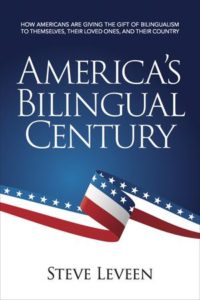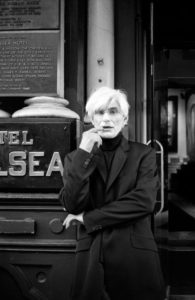
Business, Sports… and Defending the Apostrophe
I ask GP what he’s been doing since he retired late last year.
“Living the dream,” he tells me. “I walk along the beach almost every morning. Once or twice a week I golf. I fill in the rest of the time with crossword puzzles, watching sports or TV or a movie. With Netflix, Hulu, Amazon, and the others, there are so many good things to watch.”
“Too many,” I say.
RS has a part-time job in a hardware store, which he likes. Having spent his life in construction, he knows a lot about building materials and tools. Sharing his wisdom with shoppers makes him feel good.
“I get that,” I say.
I ask him how he spends the rest of his time. Like GP, RS golfs, watches sports, and binge watches “true crime” series on the streaming services.
And then there’s the grandkids. GP and RS agree that time spent with the grandkids is the best. “So long as it doesn’t go more than a few hours,” they add. There’s just so much endurance an old person can muster up for toddlers.
GP and RS are old friends of mine. And they are good friends. But we struggle sometimes to have good conversations. I’ve been trying to figure out why that is.
Here’s my current theory: We grew into adulthood in an era when men were supposed to be the sole breadwinners. It wasn’t until we were in college that the women’s liberation movement kicked in. And even then, it wasn’t about men having less financial and parental responsibility, but about women exercising certain already established rights.
As we made room for women as equals in the workplace and elsewhere, we never expected that our financial responsibilities would be lessened. We would accept some responsibility for the housework and the child rearing, but our primary responsibility to our families continued to be to pay the bills. The more we earned, the better we felt about ourselves. And so, we continued to put most of our energy into our work.
One consequence of all of this was the effect it had on our conversation skills. In responding to the proverbial “What’s new?” we could talk at some length about the challenges, frustrations, and triumphs of our work. Work conversations were generally short and sympathetic, but they were interesting because of shared concerns. After that, the only commonality for most of us was professional sports. We talked about baseball or football or basketball.
For most of my life, I was satisfied with the conversations I had about work. I had plenty to talk about and was always interested in the experiences and opinions of my peers. As for sports, except for several years when I followed the Miami Heat, I had nothing to contribute to sports conversations. So they bored me. But that, as my friends always reminded me, was my problem. It was unnatural for a full-grown man to know nothing about professional sports. To my friends, though, my ignorance posed a different problem: Having nothing to say on the subject, I was, to them, a bore.
Today, almost all of my coevals are retired. That means we no longer talk about work. I am still working, but I’m acutely aware that it isn’t fair to burden my friends with stories of my business struggles. Instead, I talk about what they talk about: what we have done to replace the time we used to spend working – i.e., TV and movies and sometimes books… and the inevitable, golf.
And so, I find that some of the best conversations I have these days are with younger people, my colleagues and protégés that are still actively working. But that makes me sad, because I think that my best conversations should be with my best and oldest friends.
I’m drawing too grim of a picture here. My book club conversations are usually very good. And casual conversations with friends sometimes slip into philosophical discussions about politics, economics, and the disintegration of Western culture. Those I still enjoy. But it makes me second-guess the idea of retiring. I understand the allure of it, but I don’t want to spend the precious time that remains to me pissing away my time with trivial pursuits and then boring others by talking about it.
When we near retirement, we have several choices. One of them is between fixing on what we know or being receptive to continuous learning – narrowing our interests or opening up to more.
I read a short obituary in the WSJ about a British guy that decided to devote his retirement to “Defending the Apostrophe”:
After a career as a newspaper reporter and editor in England, John Richards took up the role of defending the apostrophe, an often-abused punctuation mark.
When he started the Apostrophe Protection Society in 2001, there were only two members, Mr. Richards and his son, Stephen. Soon, however, he had more than 250 members, and some made unsolicited cash donations. Letters and emails arrived from all over with examples of misuse of the apostrophe. Many offenders left the apostrophe out of possessive phrases where it was needed (“The last word was John’s.”) or inserted it where it should not have been (“It’s title was Exodus.”).
He recalled an incident when he saw a restaurant advertising coffee’s: “I said, very politely, to the owner, that it wasn’t needed. That it was a plural. But the man said, ‘I think it looks better with an apostrophe.’ What can you say to that?”
“He was always great fun to listen to,” a mourner said. “If you asked him what’s new, he always had another story and something interesting to say.”
As Anna Quindlen once said, “A finished person is a boring person.”





